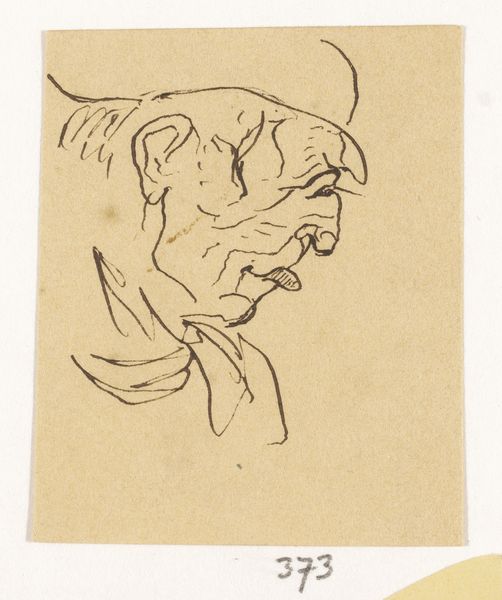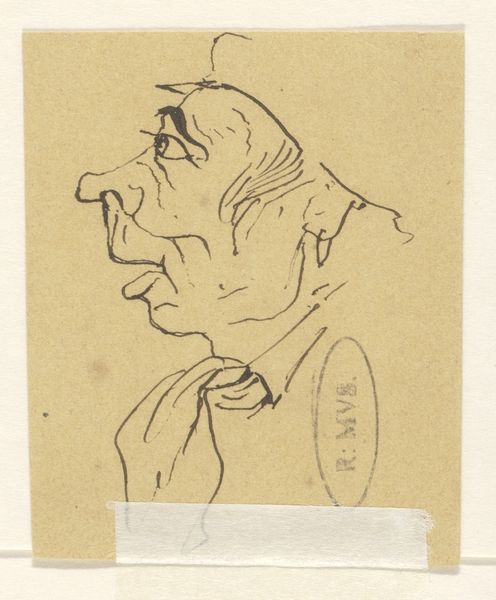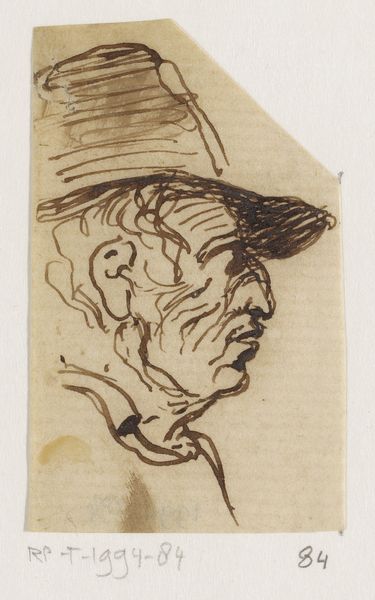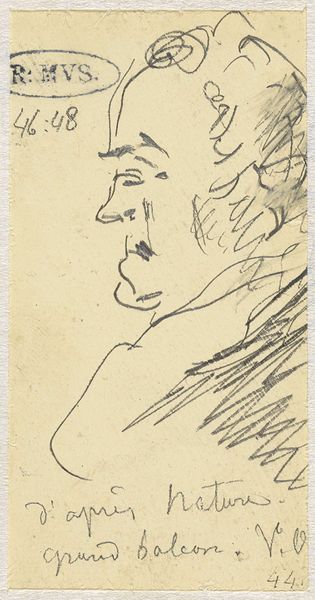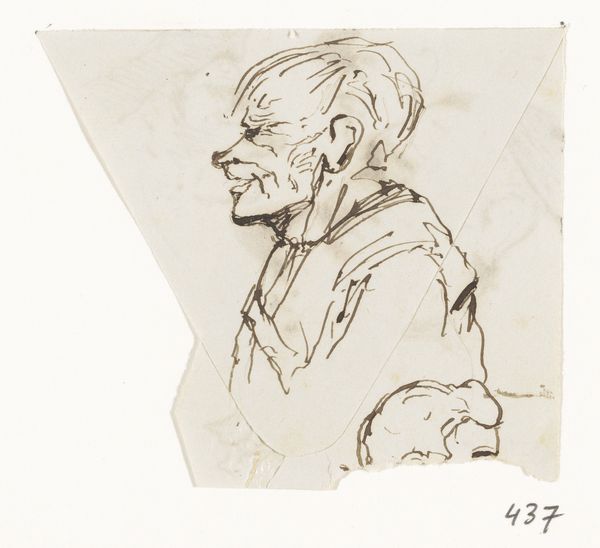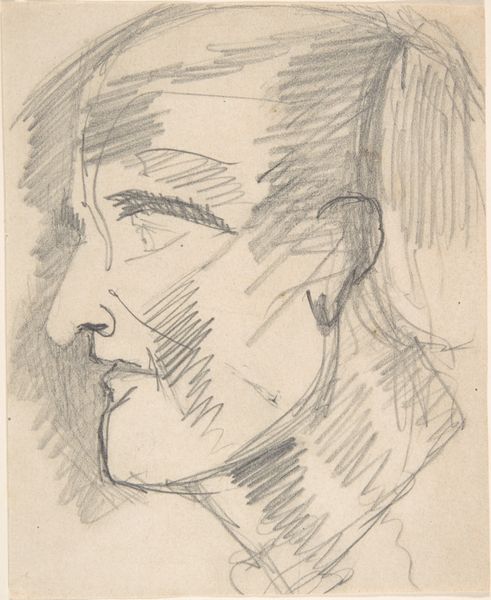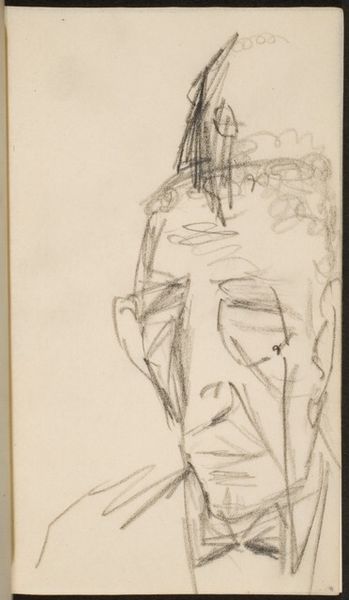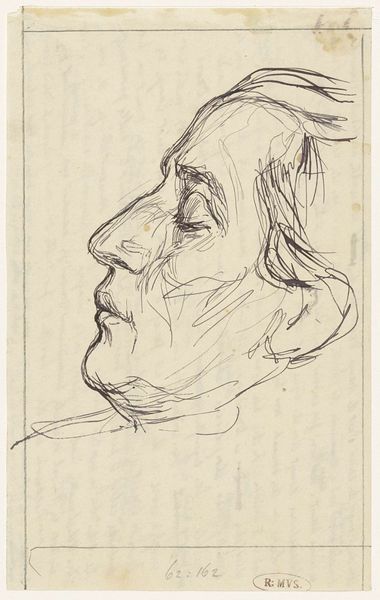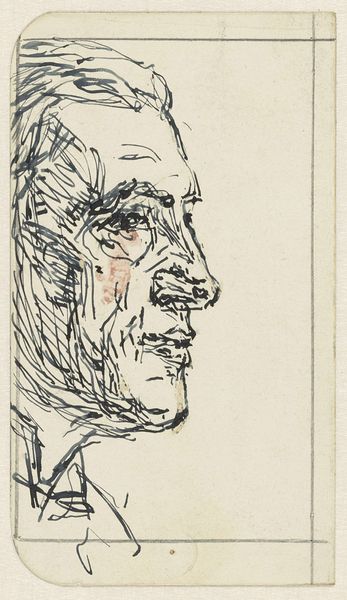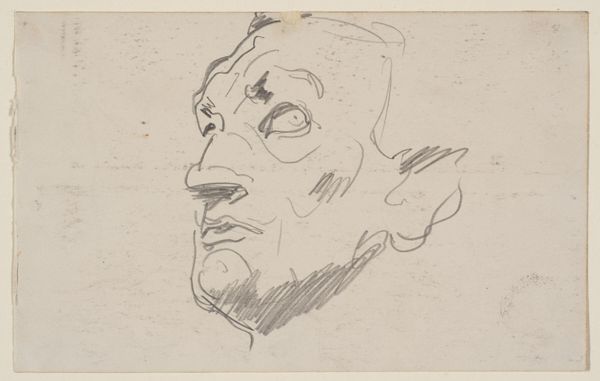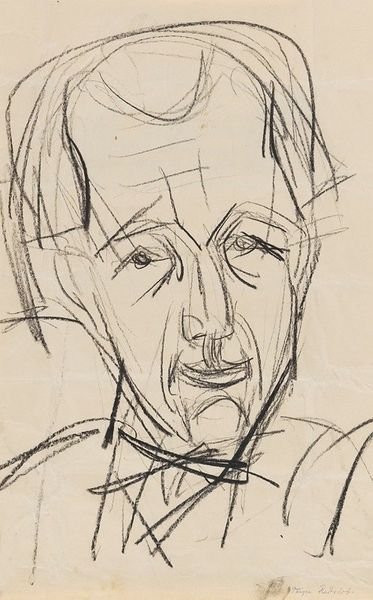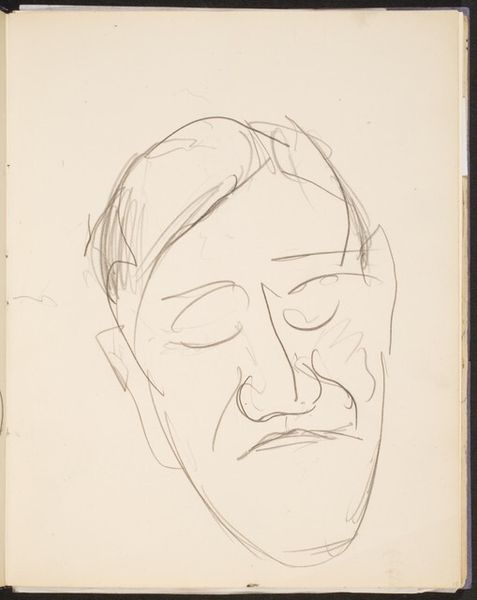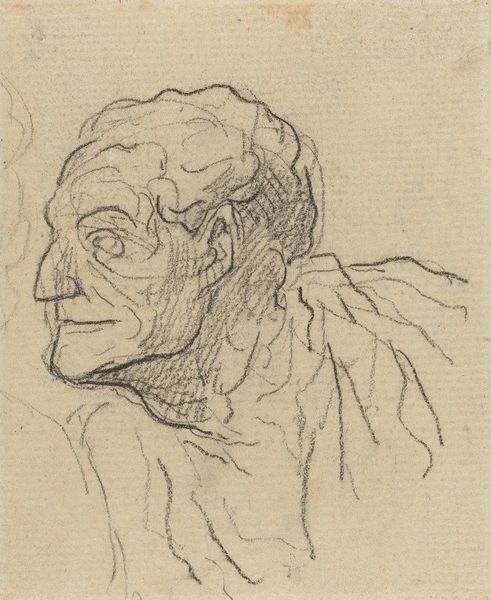
Copyright: Public Domain
Editor: This is "Head of Nick Bottom in Profile," a pencil drawing on paper by Paul Konewka, made around 1867-68. I'm struck by its stark simplicity, the raw lines capturing so much character. What do you see in this piece, particularly concerning its relationship to cultural memory? Curator: Indeed, a deceptively simple image! The character of Nick Bottom, derived from Shakespeare's "A Midsummer Night's Dream," already carries significant cultural baggage. Konewka's sketch acts almost as a visual shorthand, tapping into a collective understanding of Bottom as a comical, somewhat foolish figure. The very fact that we instantly recognize him, even in this profile, speaks to the enduring power of Shakespeare's creation and how images fixate collective identities and stereotypes. Editor: So, the sketch relies on pre-existing knowledge and iconography? Does the style then, influence this cultural meaning? Curator: Absolutely. The stark lines, almost caricature-like, emphasize certain traits: perhaps his large nose hinting at foolishness, or his slightly open mouth suggesting a propensity for bluster. Think about the weight these 'cartoons' add. How might a different style alter the character's impact? Suppose, for example, Bottom had been depicted using a more refined Neoclassical style? Editor: Interesting… it would lend him a dignity completely at odds with his character! This more academic representation, clashes with how people remember Bottom from Shakespeare. Curator: Precisely! This quick sketch style helps perpetuate the popular understanding and emotional response to Bottom. Visual culture creates continuity, preserving Bottom in this role for our minds. The drawing thus contributes to a specific interpretation of "A Midsummer Night's Dream" across generations. Editor: I never thought about how a simple sketch could actively shape cultural memory. I suppose art isn’t just *in* culture, but works to reinforce it. Curator: Precisely. Visual symbols form the groundwork of cultural continuity, often shaping emotions and knowledge alike.
Comments
No comments
Be the first to comment and join the conversation on the ultimate creative platform.
